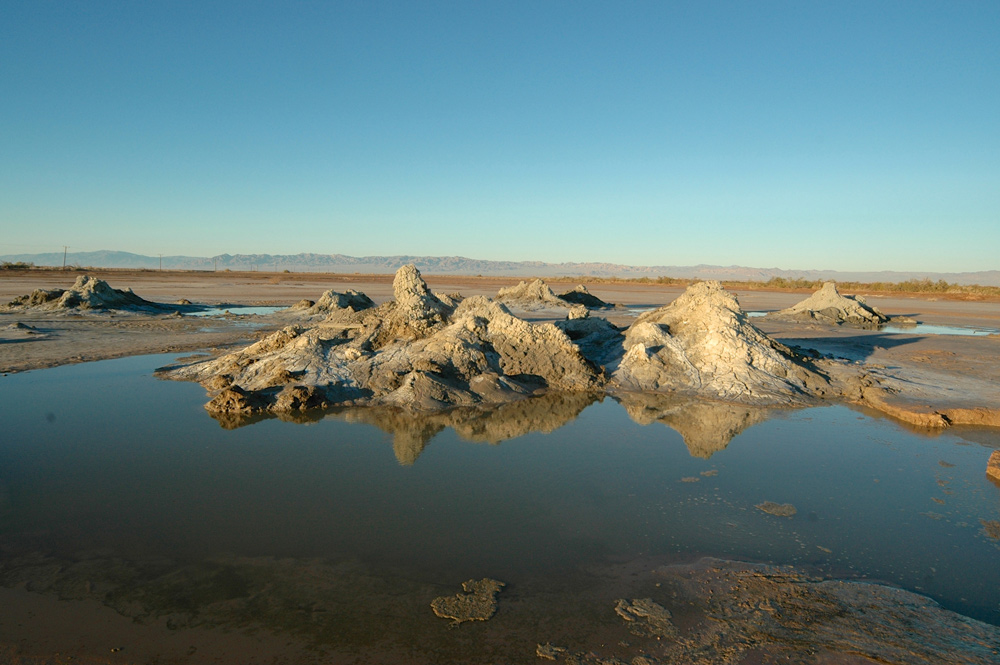
Salton Sea Mud Volcano, a surface expression of geothermal activity.
Photo Credit: Douglas Barnum, U.S. Geological Survey
September 2015 - Southern California faces an environmental and public health crisis with the continuing, and perhaps irreversible demise of the Salton Sea. This potential wind-blown disaster and related human and economic consequences can be mitigated only if the state quickly implements long-planned improvements, the Little Hoover Commission stated in a report released Thursday, Averting Disaster: Action Now for the Salton Sea.
“The risk to Southern Californians, and in particular the Imperial and Coachella Valleys, their economies and to migrating wildlife, is mounting and well-documented,” said Little Hoover Commission Vice Chair Loren Kaye. “The state has studied this subject long enough; now is the time for action.”
The Commission’s report details a range of negative consequences as thousands of acres of newly dried-up Salton Sea lakebed become exposed to desert winds that could carry dust to populated areas and nearby world-class resort economies. Scientists and experts say without state action dust storms will have serious air quality impacts for Coachella and Imperial Valley residents already contending with California’s highest rates of asthma and unemployment. As the decline of the lake accelerates in 2018 due to changing uses of the Colorado River, efficient irrigation practices and farm-to-urban water transfers, millions of migrating birds that feed on Salton Sea fish populations – and lacking similar ecosystems elsewhere due to large-scale development of wetland areas statewide – also face threatening consequences.
To spur action toward Salton Sea restoration, the Commission commends the Governor on his September 2, 2015, appointment of an assistant secretary for Salton Sea policy and recommends:
Immediately implementing projects to cover part of the lakebed with dust-mitigation projects and shallow ponds for wildlife habitat, and exercising an available option to sell water to boost project funding.
Beginning construction on currently-permitted projects and identifying funding – including money from the Proposition 1 water bond enacted by voters in 2014 – to begin planning a second generation of projects and long-term restoration strategy.
The Little Hoover Commission will hold an April 2016 hearing to monitor state progress. Additionally, it will request an August 2016 briefing by state officials about the next phase of projects, as well as medium- and long-term strategies for the Salton Sea.
The Little Hoover Commission is a bipartisan and independent state agency charged with recommending ways to improve the efficiency and effectiveness of state programs. The Commission’s recommendations are submitted to the Governor and the Legislature for their consideration and action. For a copy of the report: Averting Disaster: Action Now for the Salton Sea.
Source: Little Hoover Commission
